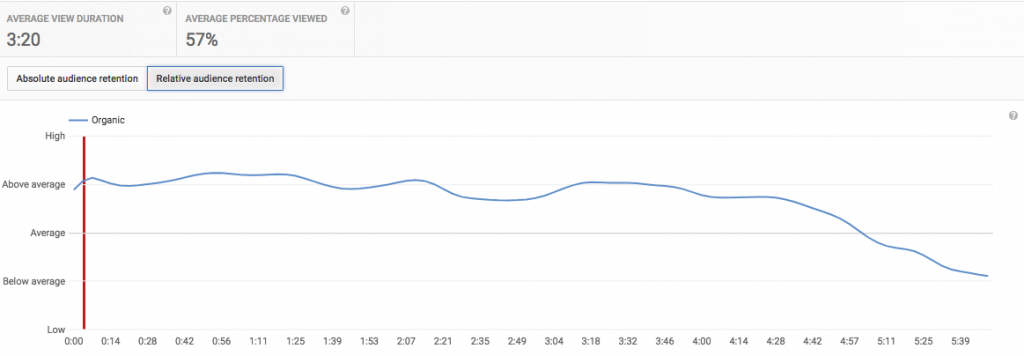How to Measure Your Video’s Success
How can you tell if your video is a success?
Video’s direct impact is personal and emotional. Its immediate consequences are for your image and your relationship with viewers. Do they like you? Do they care about your cause?
We can’t exactly interview every viewer to see what he or she thinks. But we do have all kinds of useful ways to analyze viewer behavior, which let’s us piece together a nice, revealing picture of a film’s influence.
Remember, too, that you began the video marketing process by setting clear goals. You know what your overall objective is, be it fundraising, outreach, or recruitment. You can learn a lot by verifying and quantifying video’s contributions in these areas.
We’ve talked before about learning to spot dodgy claims and useless figures. Now we’ll delve a little deeper into meaningful stats and how to read them.
We know how much you put into making a video, personally and financially. Now you can have the tools to be appreciate the payoff, too.
Metric 1: Reach
This metric is also known as view count. Simply put, it tells you how many people have clicked on your video.
An example of view count (YouTube)
Reach is regarded as the most basic metric out there. Everyone, bar none, wants to rack up a lot of hits. Every other consideration aside, people need to see your video for it to have any effect – the more the merrier.
Many organizations, however, don’t know how to read this metric correctly, or they rely on it too much. They think that a high hit count is all they need to label a video a success.
It’s important to remember that there are many things view count alone can’t tell you.
Are you reaching more people with your video than you would without? Are viewers engaged by the video? Are they responding to it with action? Is the video circulating only among your preexisting audience, or is it helping to grow your following?
These are vital signifiers of a video’s effectiveness. You don’t just want to know if people have clicked on it. You want to know if it attracted more attention than you would have had otherwise, and you want to know what steps viewers took next.
View count’s greatest strength is as a comparative tool. It can show you when a video is a bigger draw relative to other content you’ve released on the same platform, like a previous year’s video on your website or an article you shared on Facebook. View count can indicate which strategy is the biggest winner.
Beyond that, you need to look at some of the other stats available.
Metric 2: Relevance
View count tells you if someone clicked, but play-through percentage tells you if they stayed. How much of the video did viewers sit through? Was it able to retain their focus? Or did they grow bored and leave, likely unmoved?
This video kept its audience engaged very well (YouTube)
A video’s ultimate purpose is to drive some sort of action. In order to achieve this, it needs to feel relevant to the viewer. There are a lot of good causes out there; for a viewer to become invested in yours, you need to connect with him or her on a personal level.
If a viewer is only getting 30 seconds into a 7-minute video, that’s a pretty clear sign that you haven’t forged that bond. No matter what your hit count is, this stat can give you some important insight into whether and where you may need to reevaluate your approach.
Metric 3: Conversion Rate
In an ideal scenario, a viewer clicks on your video, watches it all the way through, and is inspired to take whatever action you indicate. “Action” can mean clicking the donate button, signing up for your program, subscribing to your newsletter, and so on.
This last step is the primary objective of any video campaign. It’s what all your work has been about. This is the eventual return on your investment; it’s what you’ve been anticipating since the first strategy session.
So how effective is your video? In the end, it comes down to how well it converts views into deeds. How many people click through to contribute after watching your video? How many look for a sign-up sheet or application?
For example, after starting their campaign, we grew this site’s web traffic significantly. (Google Analytics)
Conversion rate isn’t a perfect metric. It comes with a lot of so-called “noise,” meaning that there are usually multiple variables that drive people’s actions. It can be hard to know how much credit to give your video relative to other factors.
Like view count, you learn the most from the conversion rate when you use it comparatively. How do the results from this year’s video match up against last year’s? How often do viewers choose to get involved with your organization versus non-viewers?
This lets you isolate conversion rate from all the noise and detect changes that correspond with the implementation of a new video.
Conclusion
These are the essential metrics you need to make sense of all the raw data. They’ll help you evaluate your video’s effectiveness at every step, from clicking to commitment. With this knowledge in hand, you’ll be well-equipped to go from choosing a reliable marketing firm to becoming an informed participant in the video marketing process.




